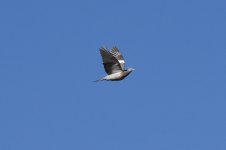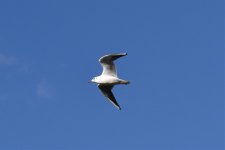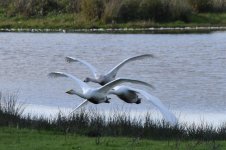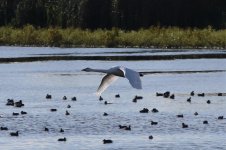Apodidae49
Well-known member
I’ve touched on this in camera and lens threads and had varying degrees of advice so I thought it needed a thread of its own.
I have a Nikon D5600 and the AF 70-300 DX VR and, notwithstanding the reservations of some regarding that lens for birding, I’d like to get the optimum performance when photographing BIF.
I watched a YouTube video comparing the Nikon D3300 with the D5300 and it mentioned that the 3300 only has one active focus point, right in the centre of the array but that the 5300 (and by deduction, the 5600) has 9 active points in the centre of the viewfinder. So my first question is should 9 points be chosen when trying to capture BIF?
Question 2 should the AF mode be set to AF-S as this is what the book says is the setting for tracking and where does 3D come into the equation?
Being a graduate of bridge cameras I usually tend to use the Program setting but I think that having a good camera with good AF should enable me to be more flexible and/or creative.
Is there a button or setting on the camera whereby I can store all of the best settings for BIF and just access it when needed?
Will having the camera on optimum settings for BIF enable good still shots to be made if the opportunity presents itself?
I’m sure I’ll think of more questions but those will do for now.
I have a Nikon D5600 and the AF 70-300 DX VR and, notwithstanding the reservations of some regarding that lens for birding, I’d like to get the optimum performance when photographing BIF.
I watched a YouTube video comparing the Nikon D3300 with the D5300 and it mentioned that the 3300 only has one active focus point, right in the centre of the array but that the 5300 (and by deduction, the 5600) has 9 active points in the centre of the viewfinder. So my first question is should 9 points be chosen when trying to capture BIF?
Question 2 should the AF mode be set to AF-S as this is what the book says is the setting for tracking and where does 3D come into the equation?
Being a graduate of bridge cameras I usually tend to use the Program setting but I think that having a good camera with good AF should enable me to be more flexible and/or creative.
Is there a button or setting on the camera whereby I can store all of the best settings for BIF and just access it when needed?
Will having the camera on optimum settings for BIF enable good still shots to be made if the opportunity presents itself?
I’m sure I’ll think of more questions but those will do for now.
Last edited:









